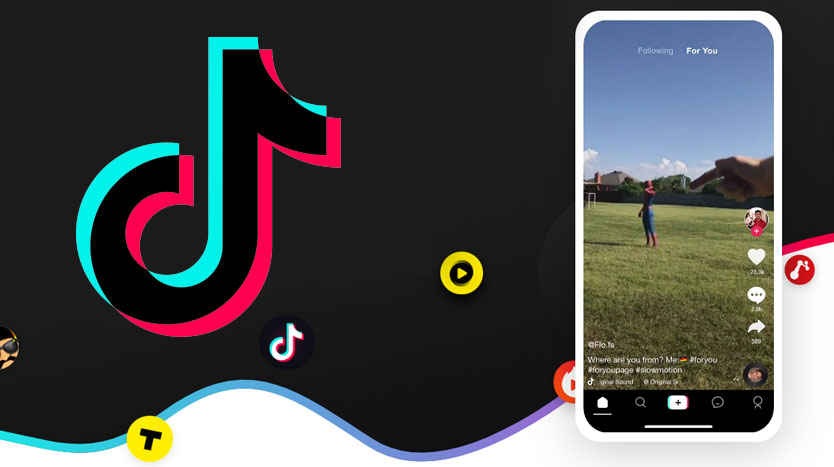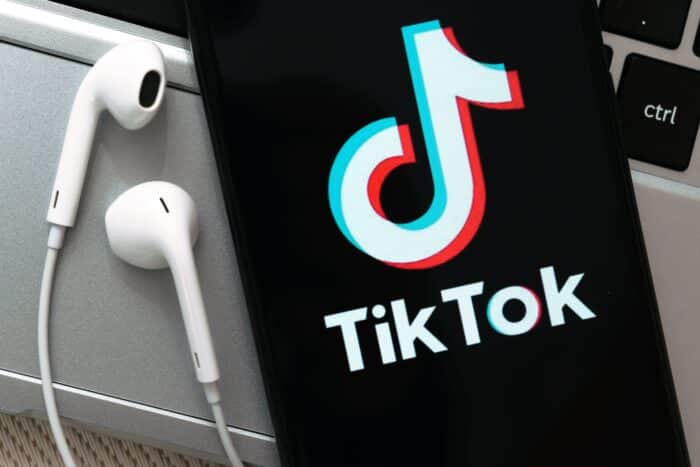
At the end of 2019, the social network TikTok officially launched its advertising solution TikTok Ads on the French market. This is a major opportunity for advertisers! It’s impossible not to notice the growing popularity in TikTok and its short video format, particularly among the younger generation.
To maximise advertising potential on the platform, TikTok Ads offers a variety of advertising formats. Let’s take a look at these different formats and their comparative advantages.
Why advertise on TikTok?
In 2021, TikTok officially passed the symbolic milestone of one billion active users worldwide [1]. A remarkable boom, bearing in mind that the social network was only created at the end of 2016. All over the world, there was a notable jump in TikTok use during the health crisis. Among 15-24 year olds, 2020 lockdowns led to a 27% increase in use compared to 2019. [2] [2]
TikTok users are a lucrative target for brands, since they spend an average of 95 minutes a day on the application, viewing and sharing content [3]. At its inception, the platform was already aimed at “generation Z” – 16-24-year-olds at the time. With the growth of TikTok, however, this trend is starting to reverse, making it possible to reach a wider and older audience.
TikTok’s other strength for advertisers is the format of its content – the short video. According to a study on marketing effectiveness of the video format [4], videos generate on average twice as many shares as other formats. According to the same study, 7 out of 10 consumers say they prefer to discover a product through video ads rather than text ads. There’s no stronger argument for integrating TikTok into your digital marketing strategy!
How to use TikTok Ads
TikTok ads are mainly aimed at brands targeting a young audience, among the 18-34 age group. Advertisers who use Meta for Business, Facebook and Instagram’s advertising platform, should find their way around easily – the two platforms are quite similar in how they work.
To get started on TikTok Ads, you should follow the following steps:
- Register on TikTok Ads Manager and fill in your contact details and billing information. This registration is sent to TikTok in the form of a request, and submitted for validation within 48 hours.
- Define a campaign objective among the three that TikTok offers: increase in traffic to your brand’s website, increase in conversion rate, or downloads of a mobile app.
- Define a target audience, according to specific targeting criteria: age group, gender, languages ??spoken, interests, and geographical area.
- Choose an advertising format and create your ad, with the use of TikTok’s content creation tools.
- Verify, approve, and launch your ad based on the parameters defined upstream.
The choice of format is a key element of a TikTok ad’s success, as well as defining the audience and the creating the content. On TikTok Ads, advertisers have the choice between four different ad formats.
The different advertising formats on TikTok and their advantages
While the In-Feed and TopView formats allow sponsored content to be inserted directly into users’ feeds, Hashtag Challenge and Branded Effects are more indirect. These formats don’t present users with an ad, but encourage them to share the promotional content themselves.
In-Feed Ads
The advantage of the In-Feed Ads format is that you can set it up on your own. For all other formats, advertisers have to contact TikTok For Business to get started. These are simply classic TikTok videos, created or uploaded by the advertiser, and played in the user’s feed among other videos. Content is displayed in full screen, and launched with sound. The In-Feed One Day Max option boosts impressions and clicks, appearing as the first ad in the feed for 24 hours.
Depending on the campaign objective, these native advertisements can redirect to a landing page, a product page, or even a link to download an app. Users can react to the content by commenting on it, or by sharing it with their own community, hence the importance of creating engaging advertising, inspired by the app’s most on-trend formats.
The In-Feed format limits the number of characters that can be used in the description of the ad. So, your ad’s success depends entirely on your choice of images and video clip.
TopView
The TopView format is intended to be very impactful. It’s very similar to the In-Feed Ads format (a short video created by the advertiser) except that the content doesn’t appear in the user’s feed. Instead, it shows up as soon as the user opens the app.
This makes it a very advantageous format because it grabs attention straight away, which promotes engagement and conversion. According to TikTok For Business, the TopView format can generate millions of views in just 24 hours [5]. This is ideal for brands that want to quickly develop their brand awareness, by redirecting their new audience to a landing page.
Hashtag Challenge
The Branded Hashtag Challenge is an indirect advertising format, which involves creating a sponsored hashtag, to entice TikTok users to promote it. The idea is to launch a challenge that users can take up by creating content associated with your brand via your hashtag.
This format rides the trend of spontaneous challenges that regularly go viral on TikTok. It requires a good dose of creativity, and above all, a detailed knowledge of your target market, their areas of interest, and their emotional triggers.
For example, we can cite restaurant chain Chipotle’s very successful #GuacDance challenge, where users filmed themselves dancing along to The Guacamole Song. Or, the #WeWillRockYou challenge, launched for the release of the film Bohemian Rhapsody.
Branded Effects
Branded Effects is another indirect and creative format, which allows brands to create custom filters, special effects, and stickers. It’s another example of users spreading the promotional content by using these elements for their own videos. User become brand ambassadors among their subscribers.
Of course, this innovative format allows you to integrate a call-to-action button or a QR Code, to redirect to your site or app.
___________________________________
Sources:
[1] Les Echos https://www.lesechos.fr/tech-medias/hightech/tiktok-franchit-la-barre-du-milliard-dutilisateurs-1349843
[2] Newsweek https://www.newsweek.com/tiktok-users-soar-viral-videos-coronavirus-covid-19-1494229
[3] Sensortower https://sensortower.com/blog/tiktok-power-user-curve
[4] Oberlo https://www.oberlo.fr/blog/statistiques-video-marketing
[5] TikTok For Business https://www.tiktokforbusinesseurope.com/fr/solutions/






